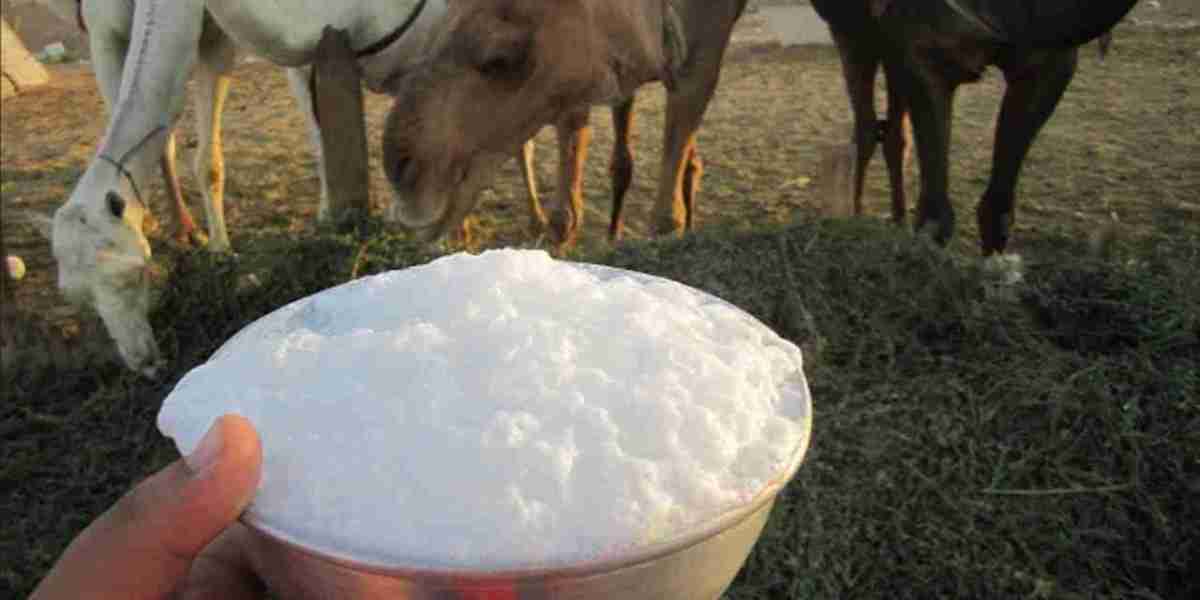Introduction
The North American camel milk market is gaining traction as consumers seek healthier and alternative dairy products. While traditionally consumed in Middle Eastern and African regions, camel milk is now entering mainstream markets in the United States and Canada. This article explores consumer trends, adoption rates, and the factors driving the growth of camel milk in North America.
1. Market Overview in North America
Camel milk remains a niche product in North America but is experiencing increasing demand due to growing health awareness and dietary preferences. Key insights include:
Emerging Market: The industry is still in its early stages, with limited but growing production and distribution channels.
Key Players: Companies like Desert Farms (USA) and Camel Culture are leading efforts to introduce camel milk to North American consumers.
Expanding Availability: Camel milk is now available in specialty stores, online platforms, and select supermarkets.
2. Key Consumer Trends Driving Adoption
Several factors are fueling the growth of the camel milk market in North America:
Health and Wellness Trends: Consumers are increasingly drawn to camel milk for its unique nutritional profile, which includes lower lactose levels, high vitamins, and potential immune-boosting properties.
Lactose Intolerance and Dairy Allergies: Many individuals who struggle with cow’s milk are turning to camel milk as a digestible alternative.
Demand for Alternative Dairy Products: With the rise of plant-based and specialty dairy alternatives, camel milk is positioned as a premium and natural choice.
Online Retail Growth: The ease of purchasing camel milk through e-commerce has expanded its accessibility to consumers across North America.
3. Challenges Facing the North American Camel Milk Market
Despite growing interest, several challenges hinder widespread adoption:
High Price Point: Camel milk is significantly more expensive than traditional dairy due to limited supply and high production costs.
Regulatory Constraints: Stringent FDA and CFIA (Canadian Food Inspection Agency) regulations affect camel milk imports, sales, and labeling requirements.
Consumer Awareness: While health-conscious consumers are discovering camel milk, broader awareness is still relatively low compared to other dairy alternatives.
Limited Domestic Production: Unlike cow or goat milk, camel dairy farms in North America are rare, leading to reliance on imports and restricting market expansion.
4. Future Outlook and Market Opportunities
The North American camel milk market is expected to grow as awareness and availability increase. Key opportunities include:
Product Diversification: The introduction of camel milk-based yogurts, cheeses, and powders can attract a wider audience.
Retail Expansion: Greater penetration into supermarkets and health food stores can boost consumer accessibility.
Scientific Research and Marketing: More studies highlighting the health benefits of camel milk can drive interest and trust among North American consumers.
Investment in Local Production: Expanding camel dairy farming in North America can reduce reliance on imports and lower costs over time.
Conclusion
Camel milk is slowly gaining momentum in North America, driven by health-conscious consumers and increasing demand for alternative dairy products. While challenges such as pricing and limited awareness remain, growing interest, retail expansion, and product innovation indicate strong future potential for the market.



